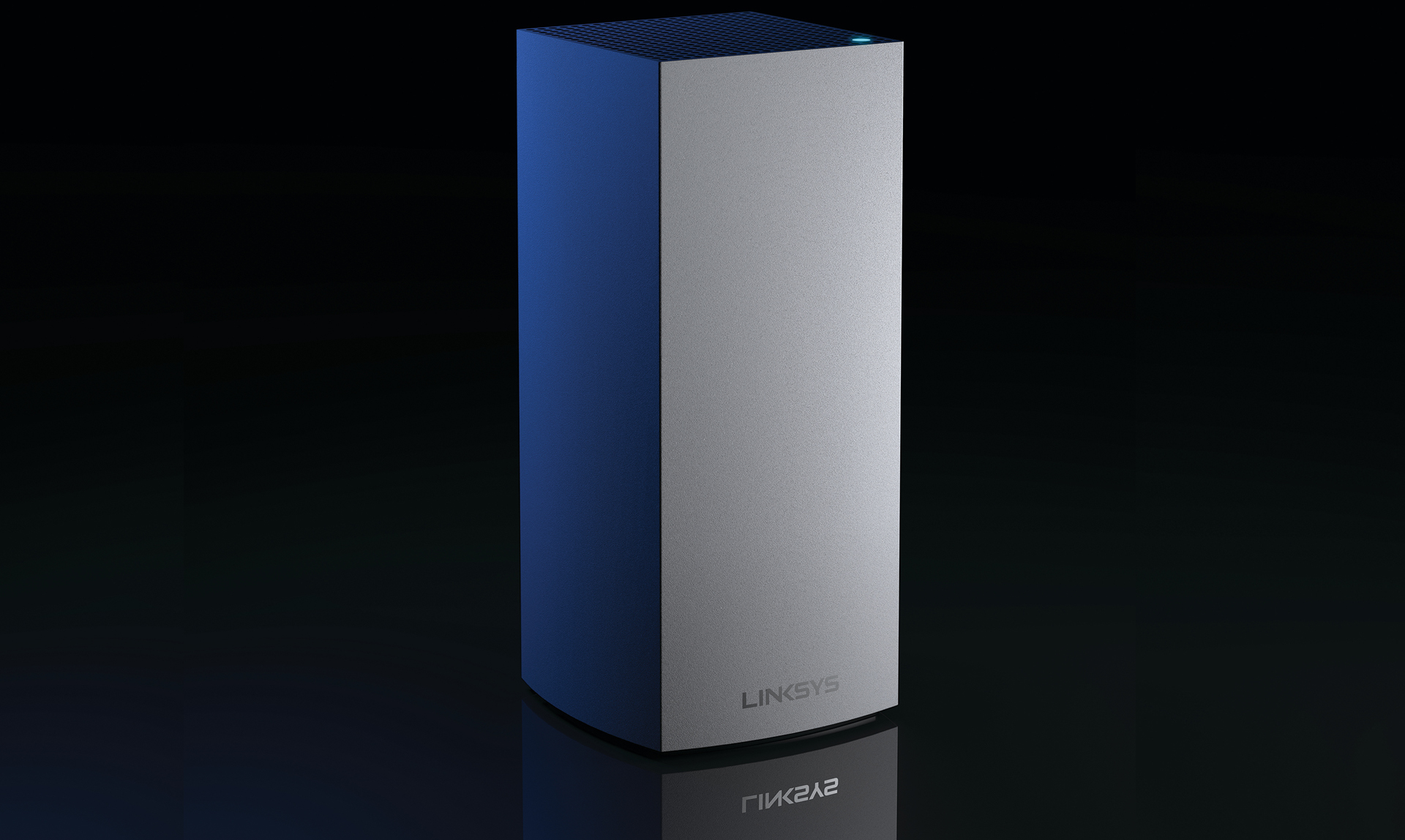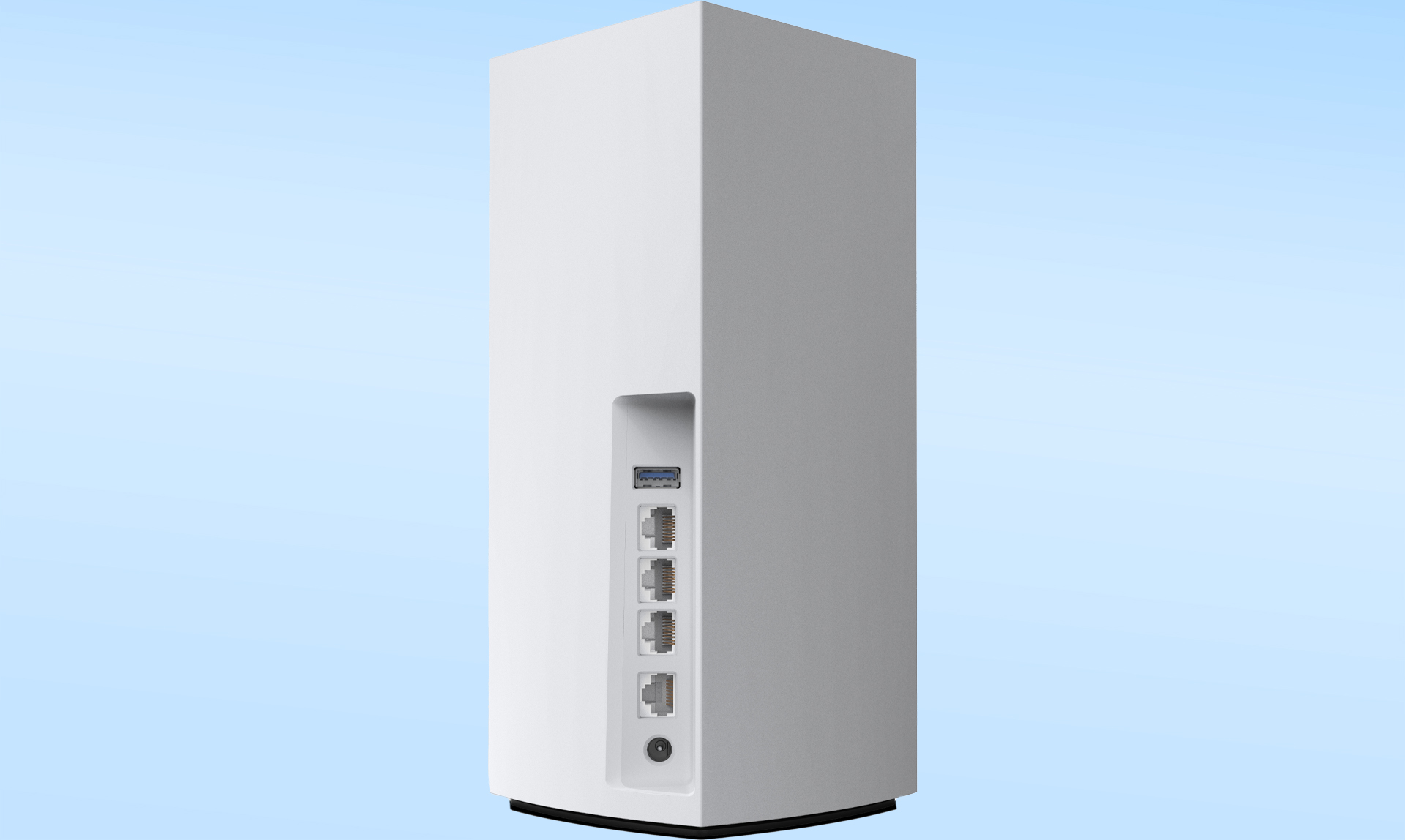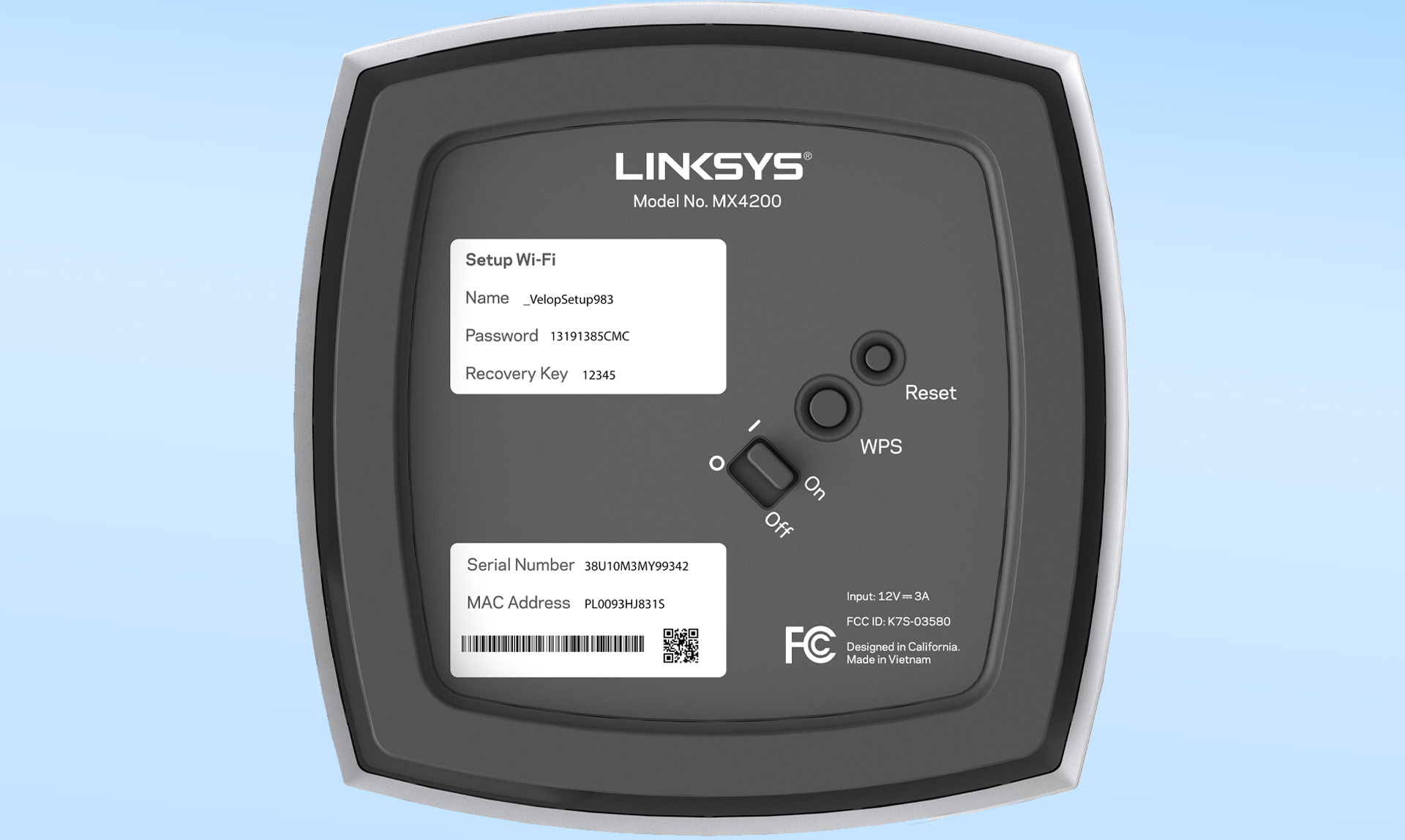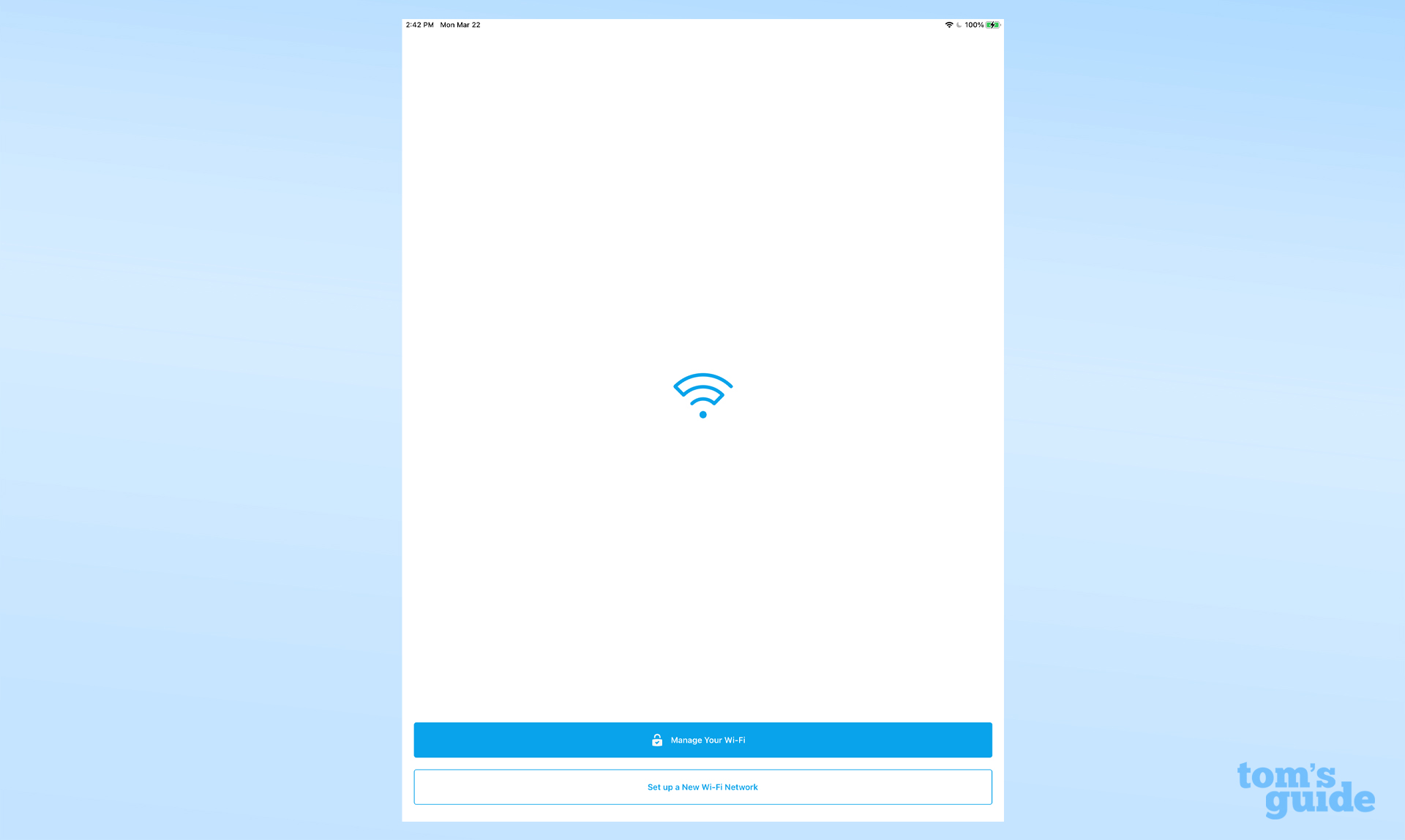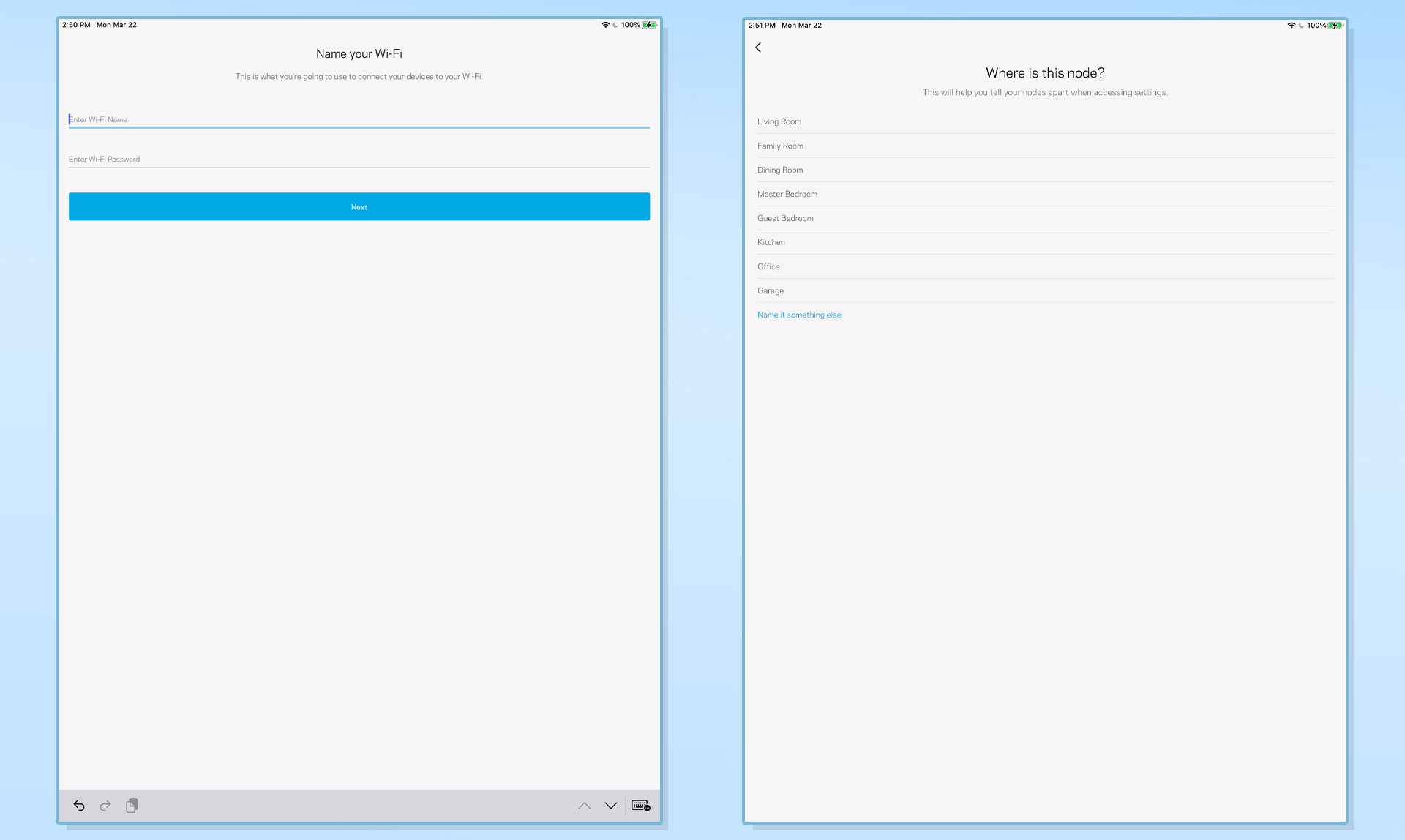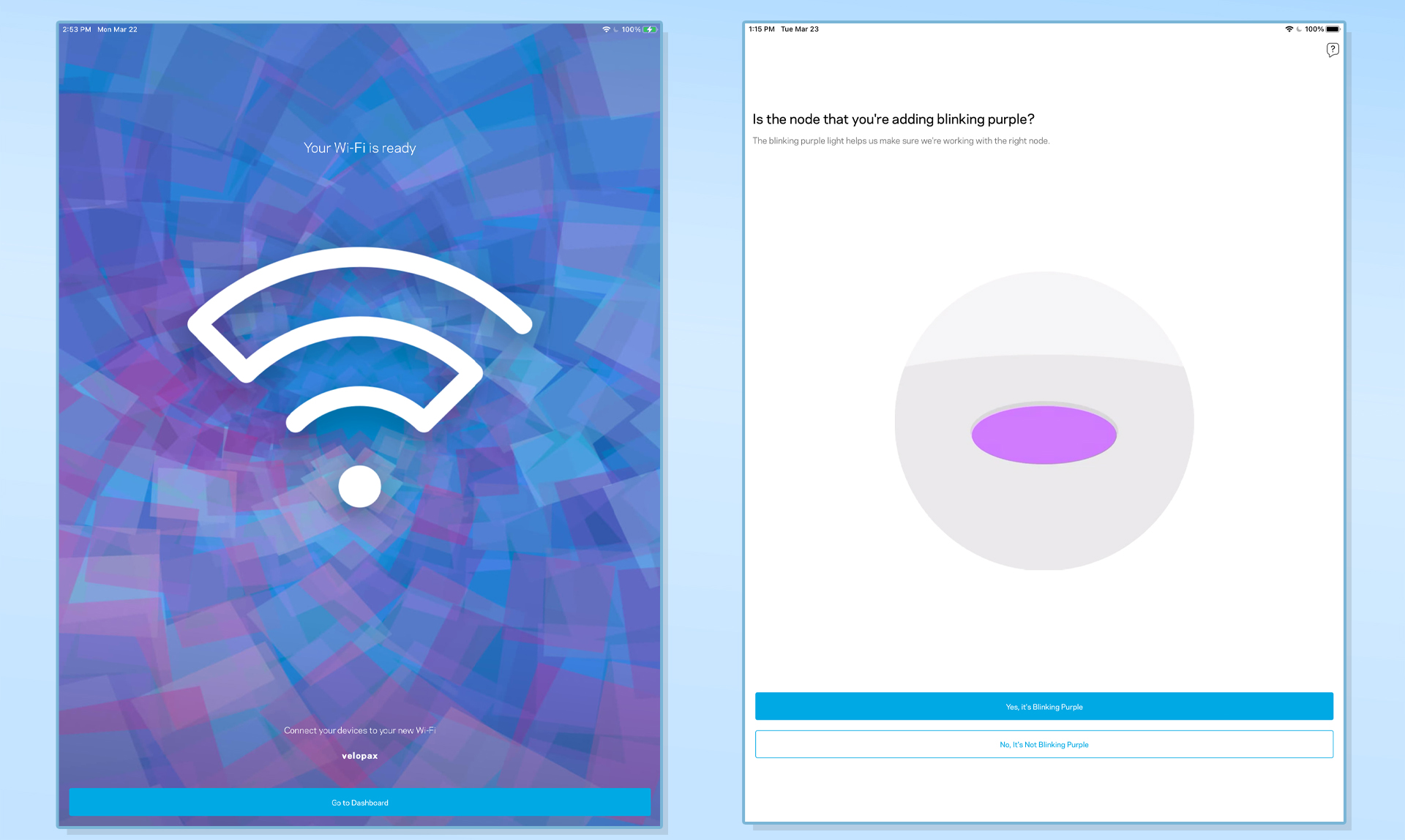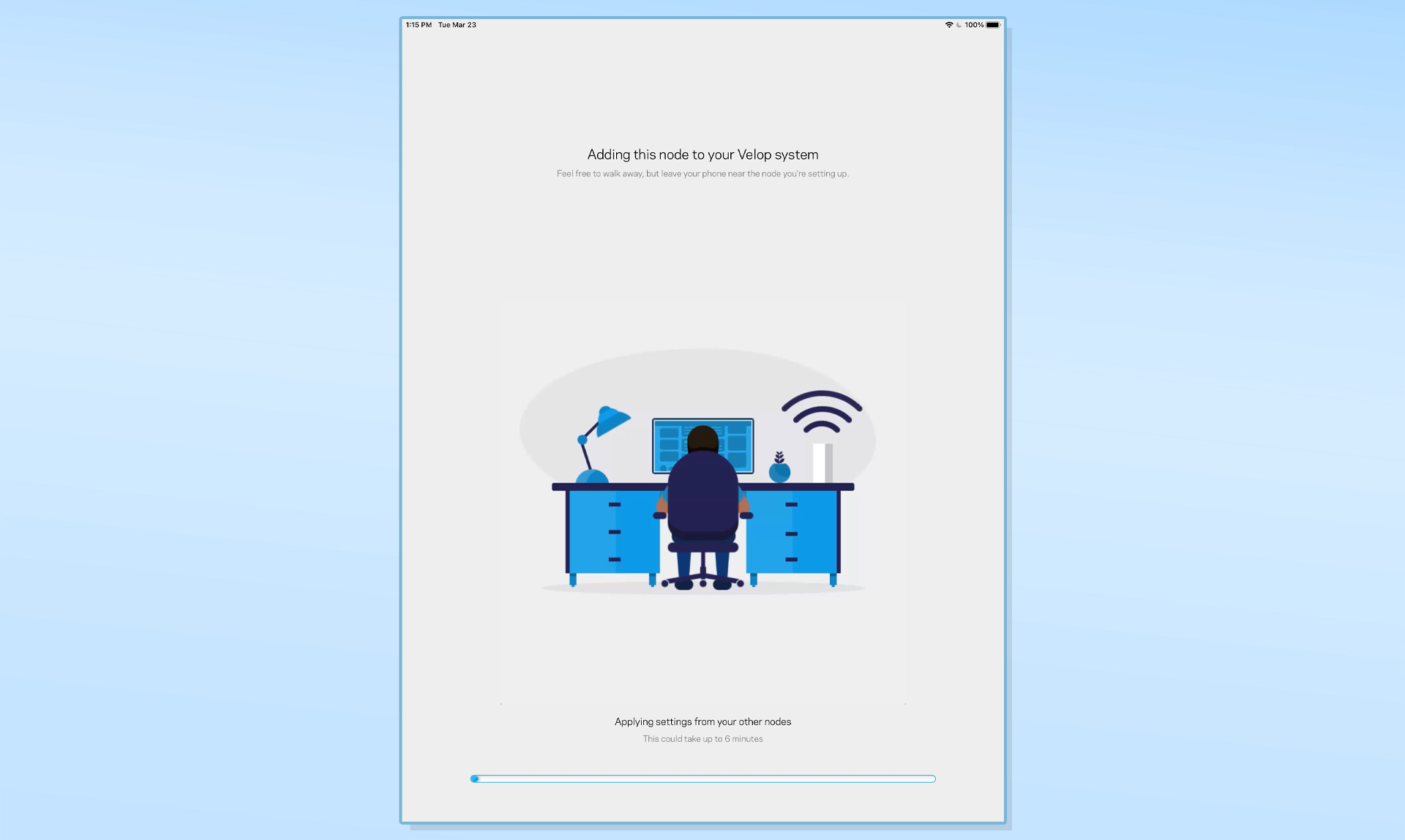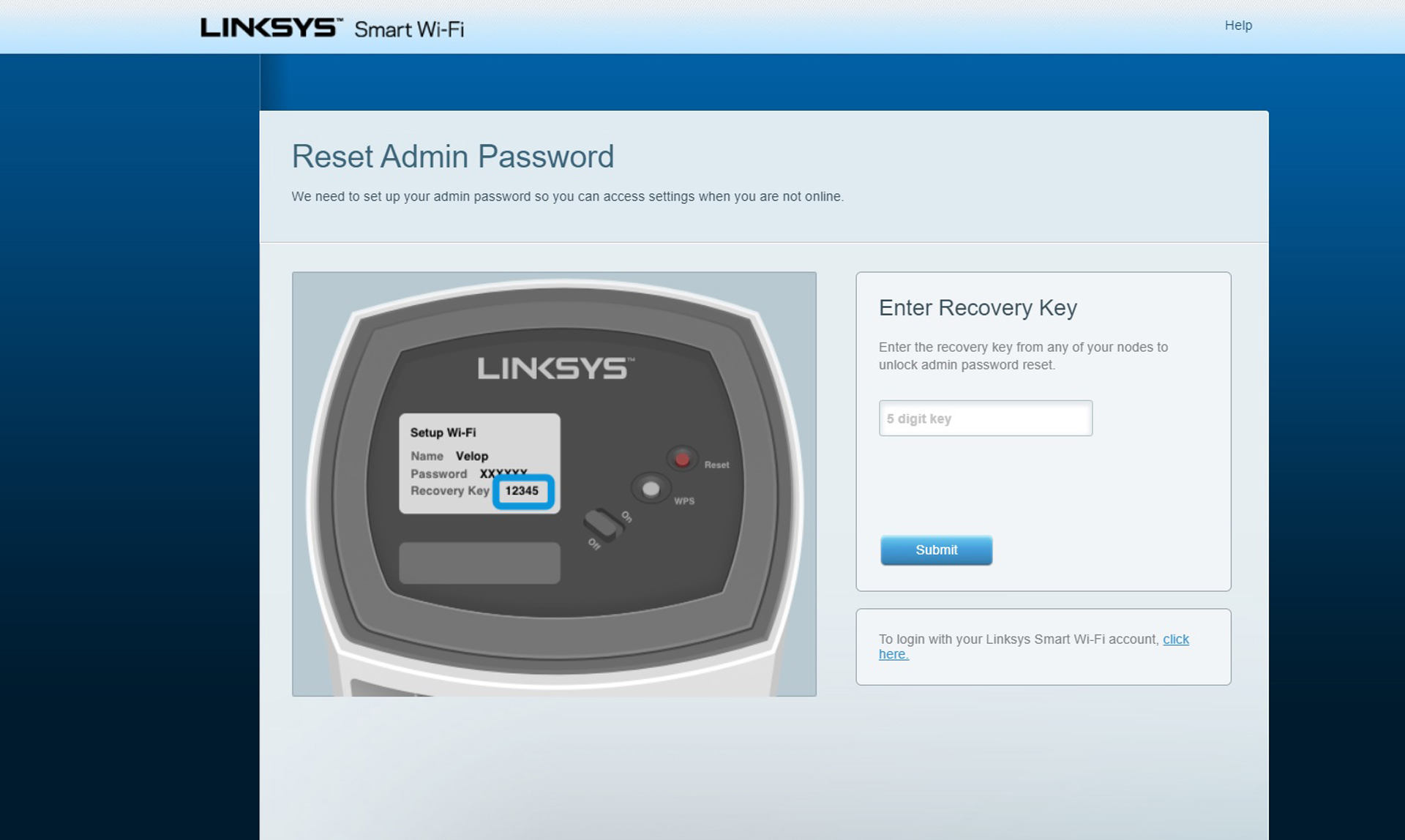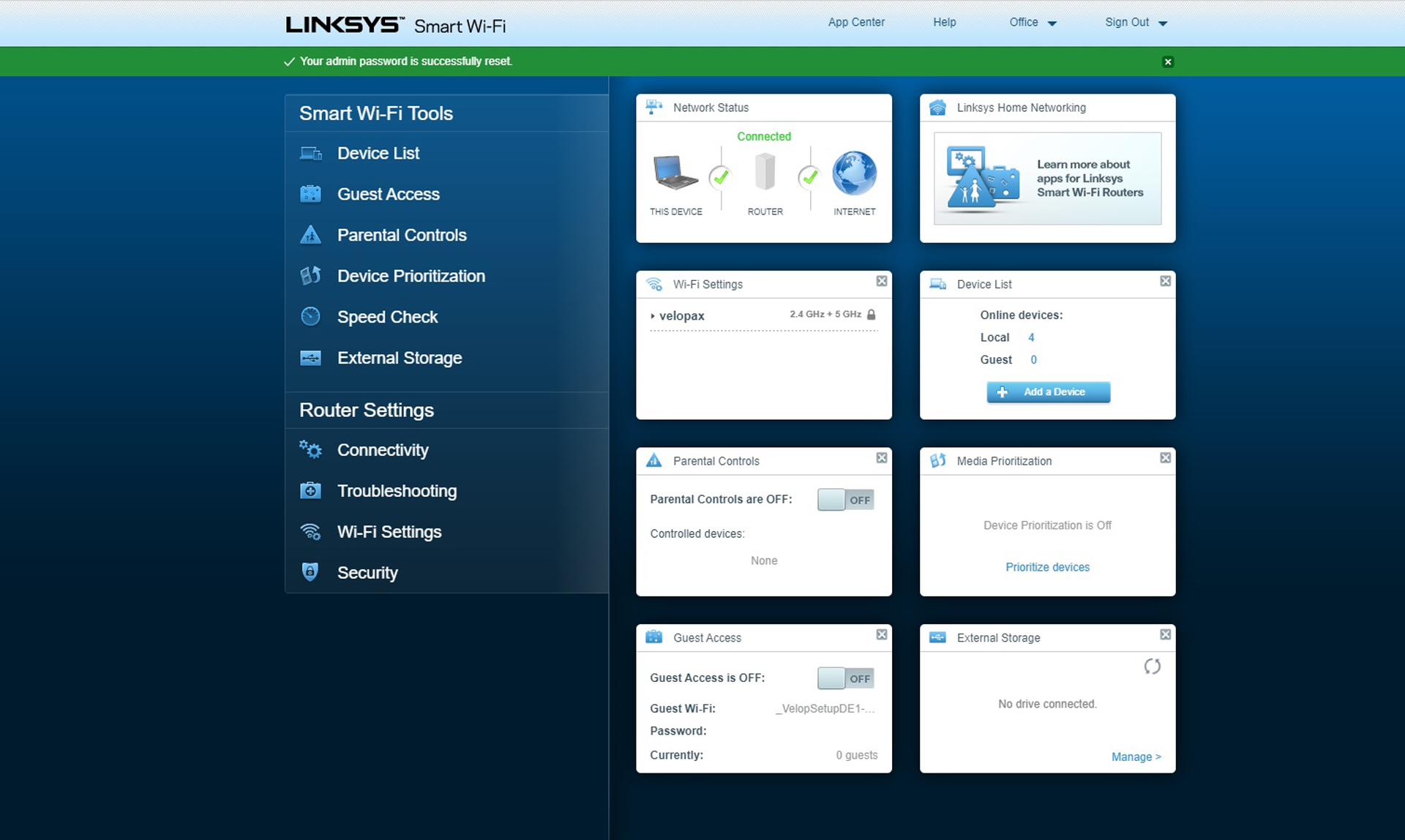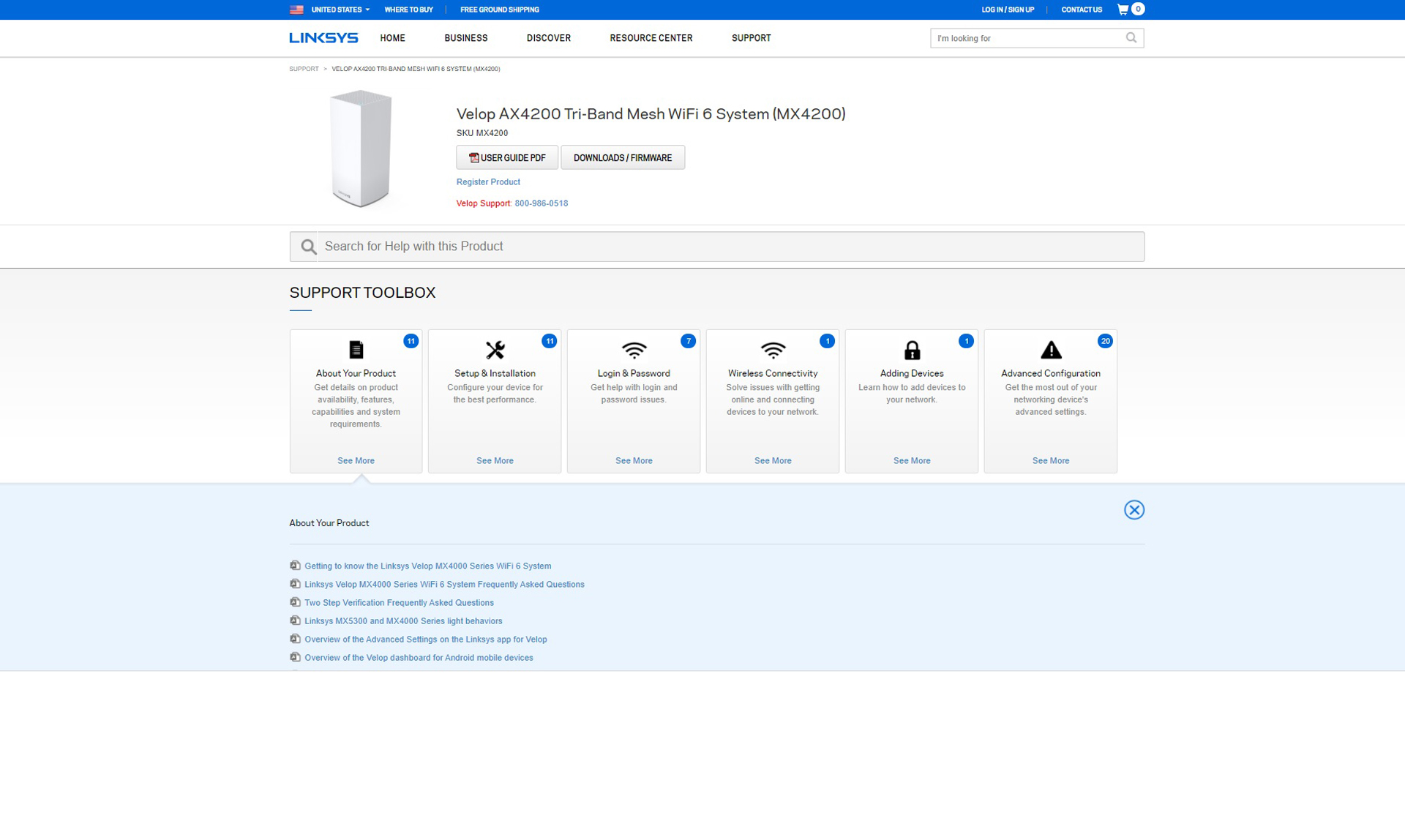Tom's Guide Verdict
Inexpensive and able to bathe a large home in Wi-Fi, the Linksys Velop AX4200 mesh kit offers good throughput, a sophisticated optimization protocol and a three-year warranty. Unfortunately, it lags behind the best Wi-Fi 6 devices and does without the customization options that some might demand.
Pros
- +
Inexpensive mesh kit
- +
Good throughput
- +
Dynamic tri-band operation
- +
USB port for hard drive
- +
Three-year warranty
Cons
- -
Small amount of customization potential
- -
No security software
- -
Slow set up
Why you can trust Tom's Guide
Wi-Fi Spec: AX4200
Number of Antennas/Removable: 8/No
Ports: Router – 1 WAN/3 LAN, USB 3
Processor/Memory/Storage: Quad-core 1.4GHz/512MB/512MB
Wi-Fi chip: Qualcomm Networking Pro 800
Peak 802.11ax performance: 507.7Mbps (at 15 feet)
Range: 90 feet
Size: 9.6 x 4.5 x 4.5 inches
Estimated Annual Electricity Cost: $14.80 per unit or $44.40 for all three devices
A bargain that’s cheap to keep, the Linksys Velop AX4200 brings together enough range and throughput to fill a large home with Wi-Fi data while continuously balancing how the data travels from the host to its satellites and back again. That was enough to get it named the best mesh router in our 2021 Tom's Guide Awards.
Its setup is easy to accomplish although, unlike other recent mesh kits, the Velop AX4200 lacks any extra security software to protect the network and its connected devices from attack. Its three-year warranty leads the mesh world but the Velop AX4200 falls short on customization options but, if you have a big territory to cover, the Velop AX4200 delivers with bits and bucks to spare.
Linksys Velop AX4200 review: Pricing and availability
The Wi-Fi 6 follow-on to the Linksys Velop mesh systems, the Velop AX4200 is available either on its own for $250 or in a three-pack for $500.
This represents not only a 33 percent discount to buying them one at a time, but the package costs $100 less than the eero Pro 6 three-pack. It’s roughly what a two-unit Orbi RBK752 kit costs. In other words, the Velop AX4200 is one of the least expensive Wi-Fi 6 mesh kits around. Each Velop AX4200 unit can cover 2,700 square feet and the three-piece kit can fill an 8,000 square foot residence, according to Linksys engineers.
Linksys Velop AX4200 review: Design
The Linksys Velop AX4200 Tri-Band Mesh Wi-Fi System (MX12600) is composed of white rectangular towers, much like its predecessor, the Linksys Velop AC1300. The move to W-Fi 6 has meant that the devices have grown in all dimensions to 4.5 x 4.5 x 9.6 inches. Still, they’re smaller than the devices seen in our Netgear Orbi WiFi 6 (RBK852) review.
Able to sit on a table, desk or floor, the Velop AX4200 can even be used as a bookend on a shelf. It may lack recessed mounting holes but there are third-party brackets available for attaching them to a wall.
The three Velop AX4200 devices that came in the kit are all the same and are configured as the host router or satellite during the installation process. They each have a single LED dot on top. When it’s solid blue, everything is online but if it turns to yellow or red, the Internet connection is weak or offline. The towers rely on passive cooling and never got above 100 degrees Fahrenheit.
Get instant access to breaking news, the hottest reviews, great deals and helpful tips.
Inside, each Velop AX4200 device has eight antennas but they can’t be aimed or replaced. Based on Qualcomm’s Networking Pro 800 series of Wi-Fi chips, the Velop AX4200 has a quad-core 1.4GHz processor along with 512MB of RAM to run its operations. There’s 512MB of flash storage for holding its firmware and settings. The system uses the latest Wi-Fi techniques for pushing data to the limit with MU-MIMO and beamforming but can’t run wide 160MHz data channels.
The Velop AX4200 tri-band design has a 2.4GHz and two 5GHz data delivery portals that use a dynamic backhaul channel. Rather than Orbi’s fixed 5GHz backhaul channel for moving data from the satellite to the host, the Velop AX4200’s software optimizes the backhaul over its two 5GHz channels. When needed it can speed communications from the satellite to the host, but when not needed, it can augment the overall data flow.
The tri-band design can move data over eight independent data channels. It can deliver 600Mbps available over its 2.4GHz band as well as 1.2Gbps and 2.4Gbps over its two 5GHz bands. The unit carries an AX4200 rating.
Notched out of one of the tower’s corners is its connection panel. In addition to a WAN input, there are three downstream networking ports. All run at 1 gigabit per second, and the Velop AX4200 lacks both a 2.5Gbps Multi-Gig input and the ability to aggregate two ports for higher throughput.
The Velop AX4200 does have a USB 3 port for connecting a hard drive and making it available over the network. This is something that the Netgear Orbi RBK752 and eero Pro 6 lack.
Underneath, the Velop AX4200 has a power switch and a recessed reset button to return the device to its factory settings and software. There’s also a button to activate the Wi-Fi Protected Setup (WPS) system for quickly adding a device to the network, something the eero Pro 6 lacks due to security concerns.
Linksys Velop AX4200 review: Performance
Overall, the Velop AX4200 did very well on our tests with a crowded network using Ixia’s ixChariot’s benchmark in my 100 year old 3,500 square foot home. With 10 data-hungry simulated clients and 15-feet separating the Velop AX4200 router and the test system, the network was able to move 507.7Mbps. That may be 40 percent off the pace set by the Netgear Orbi WiFi 6 (RBK852) router’s 833.6Mbps, but it’s roughly equivalent to the 506.7Mbps that the Netgear Orbi RBK752 managed. The eero Pro 6 was back of the class at 436.1Mbps.
After I moved the test system 50-feet from the host router, the Velop AX4200’s throughput dropped off to 201.3Mbps. That’s better than either the Netgear Orbi RBK852 (124.4Mbps) or the Orbi RBK752 (100.3Mbps). Neither could touch the resurging eero Pro 6’s 239.9Mbps of bandwidth available for the test system at 50-feet.
At 75-feet, the Velop AX4200’s throughput fell to 139.6Mbps, still behind the eero Pro 6’s 208.9Mbps. The Orbi nonidentical twins – the Orbi RBK752 and RBK852 – trailed with 82.5Mbps and 85.9Mbps available. The Velop AX4200 hit its range limit at 90-feet, 15 feet short of the eero Pro 6’s 105-foot range and ability to deliver 29.5Mbps at 90-feet.
Raw range doesn’t tell the whole story with the Velop AX4200 router punching a strong signal through walls and floors. With the receiving test system 25-feet from the router and on the other side of a wall, the Velop AX4200 delivered 525.7Mbps, well ahead of the eero Pro 6 (375.6Mbps) or the Netgear Orbi RBK752 (326.6Mbps). Only the Netgear Orbi RBK852 did better at 782.9Mbps.
With the test system set up in a bedroom directly above the router, the throughput fell to 437.5Mbps, which is on a par with the eero Pro 6’s 430.9Mbps; the RBK750 fell back with 281.0Mbps of bandwidth available, while its larger cousin, the Orbi RBK752 blasted 670.1Mbps of data. When I set up the Velop AX4200 satellite 50-feet from the router on the same floor and the test system placed another 40-feet away, it moved 161.1Mbps, leading the pack. The eero Pro 6 was closest at 142.3Mbps but the Orbi RBK852 and Orbi RBK752 were well back at 87.7Mbps and 39.1Mbps, respectively.
Later, with the satellite set up a floor above the router and the test system situated 50-feet away, it registered a throughput level of 329.2Mbps. Only the RBK852 set did better at 405.5Mbps, while the RBK752 moved 209.4Mbps and the eero Pro 6 managed 189.3Mbps. With the second Velop AX4200 satellite set up a floor below the router and the test system 40-feet away, it managed to move 276.5Mbps versus the eero Pro 6’s 190.2Mbps.
In other words, it works equally well in a horizontally-oriented ranch home as with a more vertically-oriented town house. With all three units in place, it filled my home with Wi-Fi.
During a week of testing that included downloading files, getting and sending email, playing games and watching videos, the Velop AX4200 performed reliably. I was able to view high-definition video on an iPad Pro tablet while a Macbook Air played an Internet radio station and a ThinkPad T470 was set up to play Spotify music. While all this was going on, an HP EliteBook Dragonfly notebook moved data onto and off a network-attached RAID storage system. During the test, there were no freezes, skips or artifacts.
While it’s being used, the Velop AX4200 consumed 13 watts. If it's on 24/7 and you pay the national average of 13 cents per kilowatt hour of electricity, it should cost about $14.80 a year to use each unit. All three together will run about $44, or about $15 more than the eero Pro 6’s three-pack kit.
Linksys Velop AX4200 review: Setup
Setting up the Velop AX4200 mesh set starts with getting the Linksys app. There are versions available for iOS (iPhones and iPads) as well as for Android tablets and phones. Unfortunately, there’s no way to use a browser to connect the mesh kit. I used an iPad Pro to set up the test units in my home.
I started by picking one of the kit’s three devices to serve as the host router. Unlike Orbi’s mesh sets, The Velop AX4200 units are the same and are configured as a host or satellite during installation routine.
Starting with everything unplugged, I followed the on-screen directions for setting the gear up and viewed several slides on properly placing the mesh host and satellites. I checked to make sure the host’s single LED was blinking purple, showing it was awake and was ready to get started.
The app scanned for the router and found it within a minute. Next, it automatically connected the router and it was time for me to sign up for a Linksys account.
Next up, the app wanted a name and password for the new network. I finished this phase by naming its room.
It’s ready and the app shows a success screen. At the end, there’s a screen that has “Peace of mind” at the top that has a checkbox in the lower left corner for sending usage data to Linksys; for the sake of security, I usually decline this opportunity.
All done, the app shows that the network is ready. It connected to an iPad on the first try. Start to finish, it took 12 minutes. Time to add the satellites. I started by plugging in the node’s AC adapter in a bedroom on a floor above the router. I waited for its LED to blink purple.
Back to the app, where I tapped that I wanted to setup a new product. After the app provides advice on placing the node, it found the satellite.
The software then configures the node and router. I then named the room the satellite would reside in. I finished up by adding the third node in a downstairs bedroom to cover the entire house.
The app finished up by showing that both nodes were active. Then it downloaded and installed a firmware update. Happily, the new Wi-Fi network still worked during this but automatically restarted when done. On the downside, it took 8 minutes to add each node for a total setup time of 28 minutes, making the Velop AX4200 one of the slowest mesh kits to get started.
Linksys Velop AX4200 review: Configuration
I was able to use the Linksys app or a connected browser to make modifications to the router’s settings. Based on the Linksys Smart Wi-Fi software, just type “linksyssmartwifi.com” into the address bar and then set a new admin password. I had to type the recovery code that’s printed under the Velop AX4200 to make it work, though.
Once that’s out of the way, the blue and white Smart Wi-Fi dashboard provides more configuration options than the Linksys app does. It’s well organized with a list of major categories on the left and a series of cards showing different options. Be ready to zoom the browser to 50 or 67 percent to get it all in, though.
In addition to seeing what devices are connected, it’s easy to set up the guest network and parental controls. In a moment I was able to establish my computer as the top priority for data access by dragging it from the bottom to the top of the Device Prioritization screen. On the downside, it limits the prioritization to three devices.
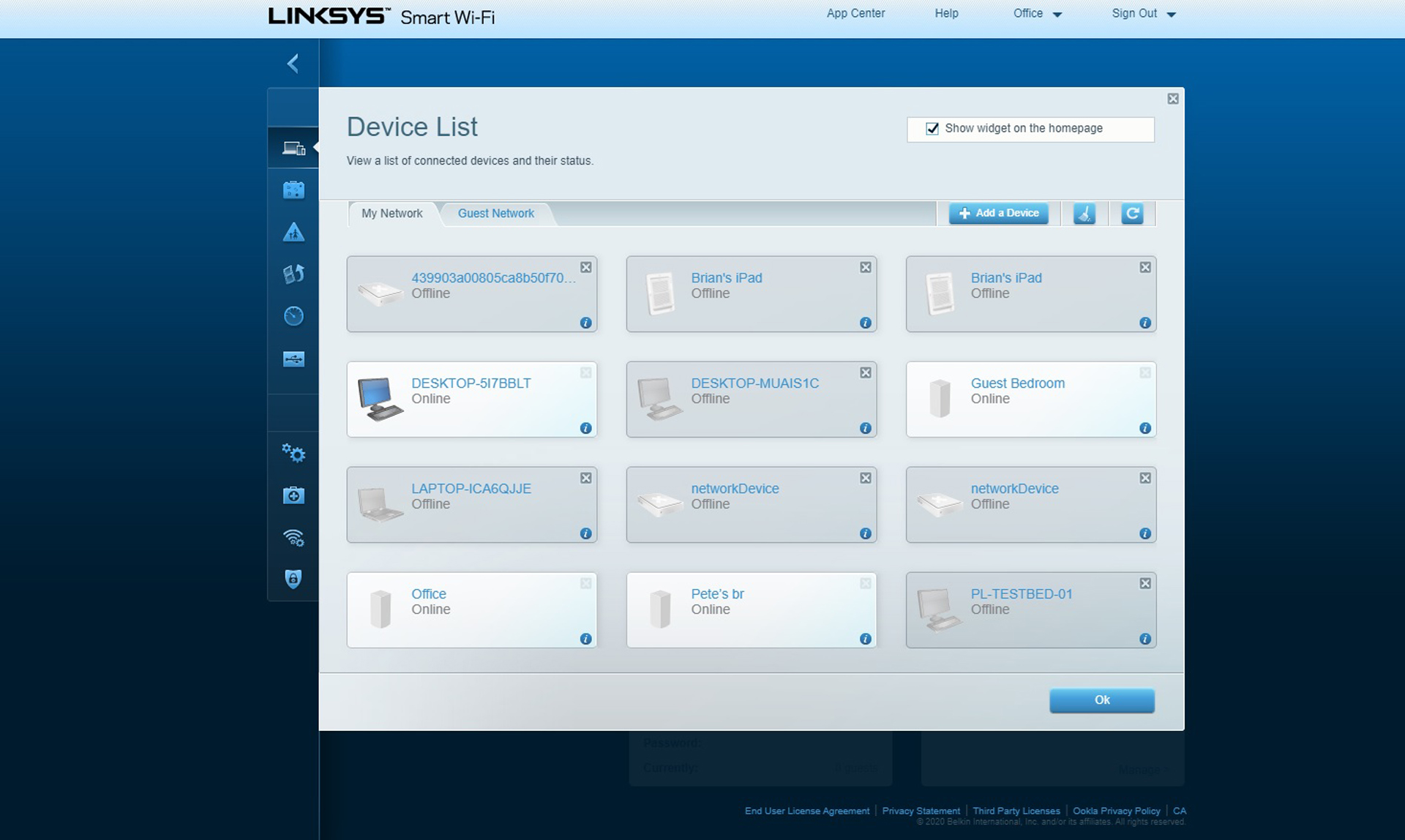
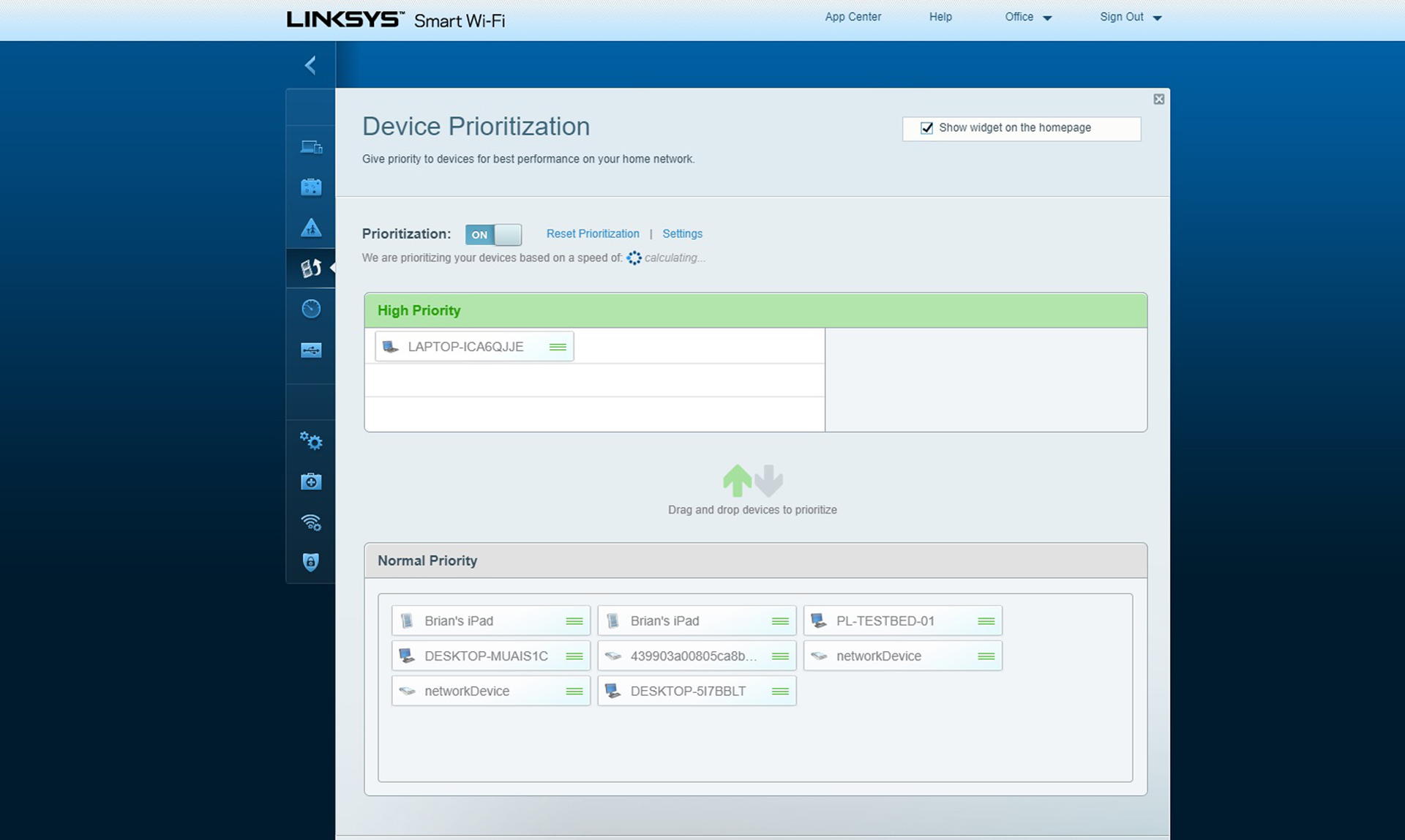
The interface has a Speed Check feature to measure your current broadband connection at the router. It takes a moment to check whether there’s newer firmware to load, although the system performs updates at night during low-load situations.
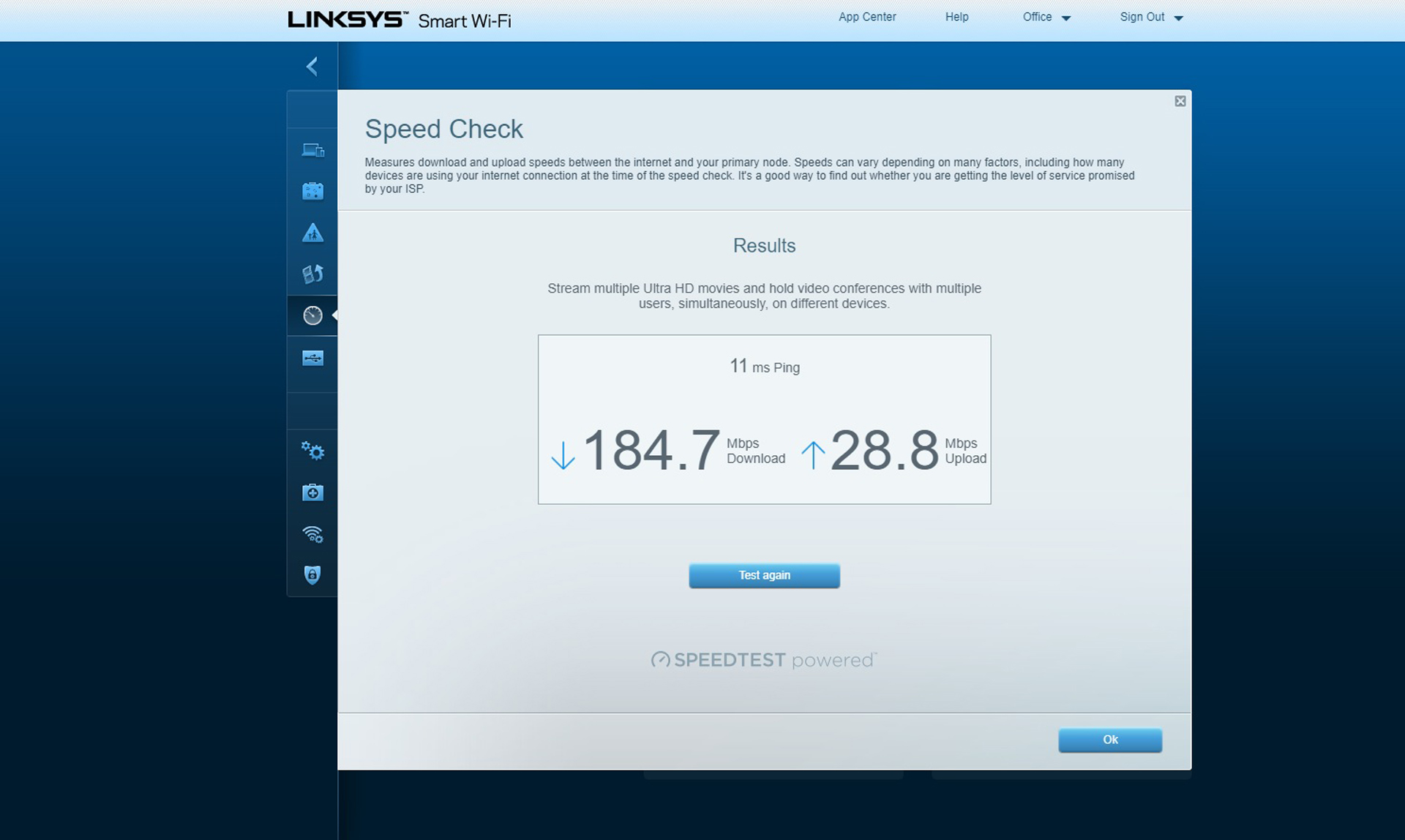
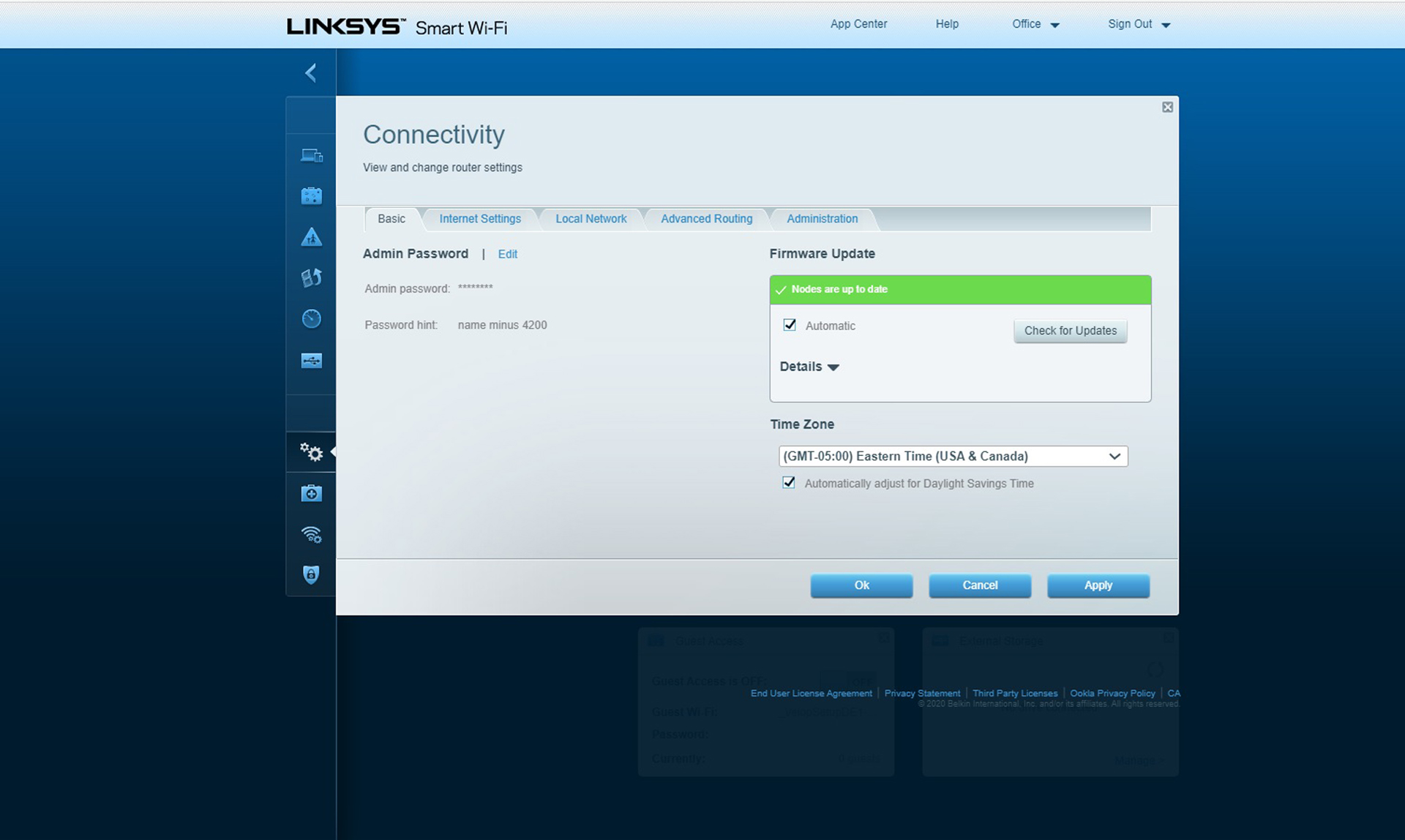
On top of troubleshooting and diagnostic sections, the Velop AX4200 has adequate security settings. In addition to setting up a DMZ and the built-in firewall, it’s a snap to set up port forwarding for a gaming machine. It, however, lacks defensive malware protection that the likes of Asus and Netgear provide as well as things like ultra-wide 160Mhz data channels and the ability to tweak settings like the RTS threshold.
Linksys provides a three-year warranty that includes full support and service. That’s much better than Netgear’s year-long warranty coverage and 90-days of free customer support. The company’s support site has it all, from information about the product and help setting everything up to fixing Wi-Fi connection problems and adding new devices. To equal the Linksys’s coverage, an Orbi RBK752 customer would need to lay out more than $100 extra.
Linksys Velop AX4200 review: Verdict
Rather than a sprinter, the Linksys Velop AX4200 is a mesh marathoner that may not offer the fastest service but can set up a wide-ranging Wi-Fi network in a big house. It’s among the cheapest Wi-Fi 6 mesh kits available yet includes two nodes for covering a lot of territory while its dynamic tri-band design means that rather than dedicating a full band to the data flow from the satellites to the host, it is apportioned on a second-by-second basis for maximum efficiency. A big bonus is the USB port for turning a hard drive or memory key into networked storage.
It may have a class-leading three-year warranty but the Velop AX4200 has one of the longest set up procedures for a three-piece mesh kit; plan on setting aside half an hour to build the network. It does without extra security software to keep the network and its devices clean and lacks high-end customization options but excels at automatic operation.
All in all, the three-pack Linksys Velop AX4200 is one of the best bargains in mesh networking at the moment. It may not be a speed demon but the Velop AX4200 three-pack brings reliable Wi-Fi 6 networking to large homes at the price of an Orbi two-pack or $100 less than three eero Pro 6 devices. That adds up to a winner for cheapskates like me.
Brian Nadel is a freelance writer and editor who specializes in technology reporting and reviewing. He works out of the suburban New York City area and has covered topics from nuclear power plants and Wi-Fi routers to cars and tablets. The former editor-in-chief of Mobile Computing and Communications, Nadel is the recipient of the TransPacific Writing Award.


